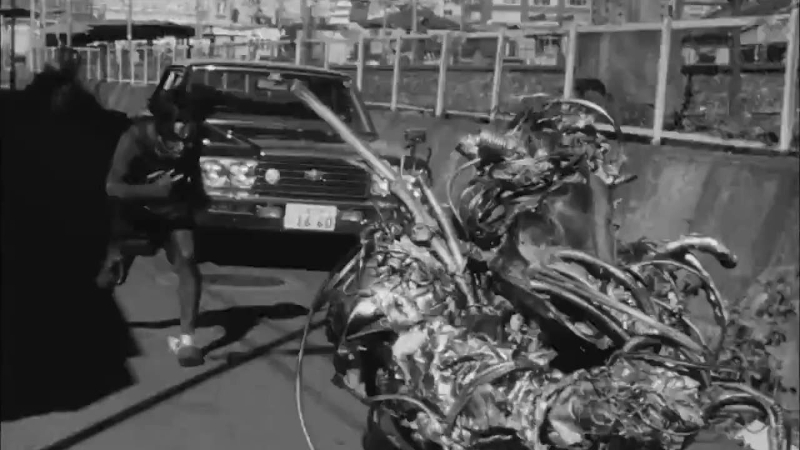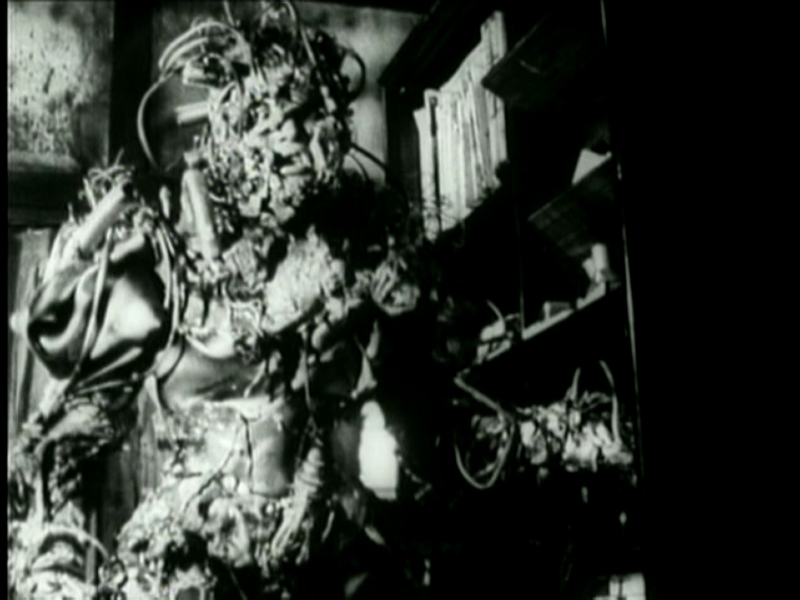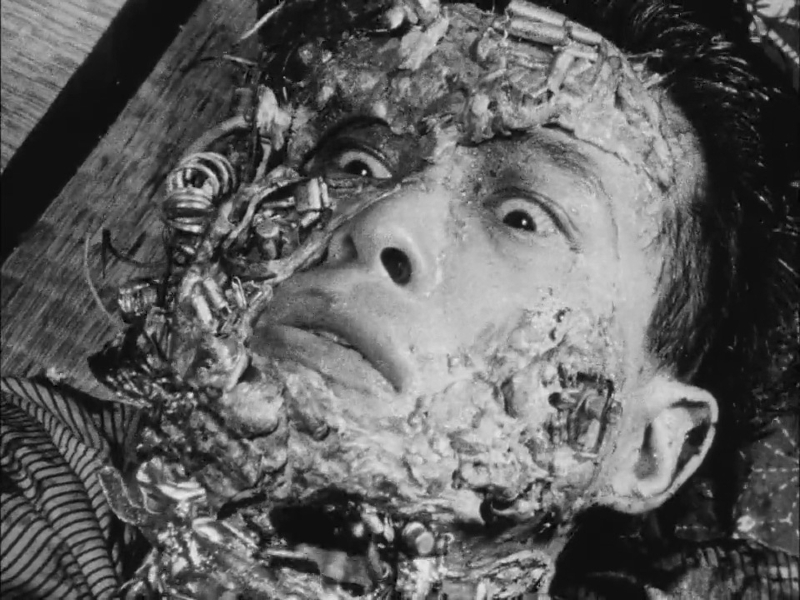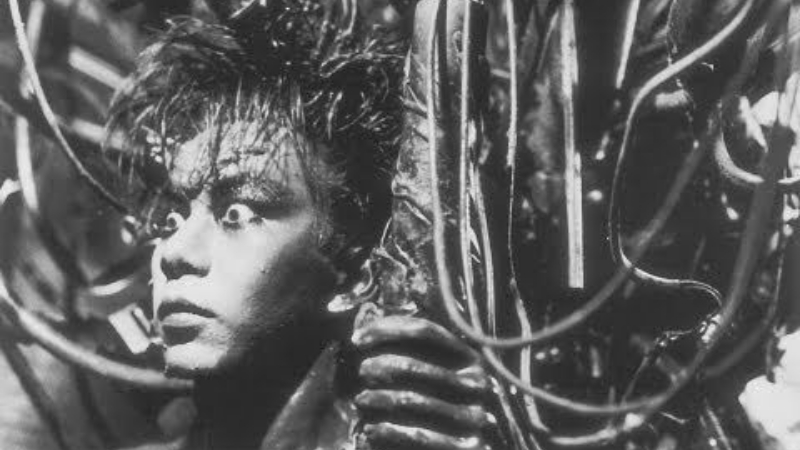Director – Shinya Tsukamoto – 1989 – Japan – Cert. 18 – 67m
*****
On Arrow Channel from Friday, September 22nd.
Previously on BFI Player as part of Japan 2020.
This review originally appeared in Manga Mania.
A metals fetishist (played by director Shinya Tsukamoto) inserts a metal tube into his leg and the resultant infection causes him to run through the streets where he’s run over by a car. A jazz sax score and the words “new world” accompany his passage into to what appears to be another dimension, from which he proceeds to terrorise an unfortunate woman on a subway platform, possessing her hand by metallicising it with spare parts.

The car’s driver, sitting next to her on the platform – who has already discovered a miniscule electronic component on his face while shaving – is pursued by the possessed woman. Later, the driver is sodomised by his girlfriend’s mechanical penis before his own penis develops into a lethal drill.
Flashbacks reveals the pair copulating in the park just after the hit-and-run accident. As he becomes more and more metallicised, he finds himself locked in combat with his crash victim, and the two eventually become fused into one, accompanying their birth into the New World.

Japanese filmmaker Shinya Tsukamoto together with a mere handful of assistants and a tiny cast has executed most production chores himself (aside from Chu Ishikawa‘s compulsive, manic synthesized music track). He combines his previous experience in theatre and performance (characters developing affinities with electric cables!) with a working knowledge of tacky special effects, pixilation and object animation along the lines of the early David Lynch, Norman McLaren, Nobuhiko Obayashi, Mike Jittlov and Jan Švankmajer (particularly Dimensions Of Dialogue, 1983). Philosophically, there are clear affinities here with Cronenberg’s ‘New Flesh’, but the roots probably lie in Japanese culture, notably the character named Tetsuo in Akira (Katsuhiro Otomo, 1988) whose remodelled, metallicised arm goes out of control.

They’re not anime in the strict definition of Japanese animated cartoons, but both Shinya Tsukamoto’s Tetsuo films are manga-inspired and brimming full of less conventional animation techniques. Drawing their themes in equal measure from live action counterparts Blade Runner (Ridley Scott, 1982) and Videodrome (David Cronenberg, 1982) on the one hand and standard-setting anime Akira on the other, they finally evoke the hybrid live-action/animation techniques of latter-day surrealists David Lynch and Jan Švankmajer.

Tetsuo is a popular Japanese name which can be written a number of different ways; Tsukamoto writes it using the two Kanji (or characters) ‘Tetsu’ (‘iron’) and ‘o’ (‘male’) – hence its English title Tetsuo: the Iron Man. The name is also found in Akira, where Tetsuo is the pill-popping biker fed up with being bossed around by Kaneda who subsequently undergoes psychic mutation. Tsukamoto’s first Tetsuo film is described in the press handouts as in the ‘Regular Size Monsters’ series, harking back to his earlier short Futu-Size No Kaijin (The Phantom Of Regular Size, 1986); no mention is made of this label with regard to the second film.
The two male opponents of Tetsuo: The Iron Man are the metals fetishist and a salaryman (the Japanese term for a white collar worker, played by Tomoroh Taguchi). The former inserts a rust-infested tube into his leg; the latter accidentally injects metal into his face while shaving. Both metamorphose into metallicised beings; the former, weakened by the rust, is defeated by and then assimilated into the latter. Much of the battle, presaged by frenetic footage of stop-frame animated wire, uses pixillation techniques out of Neighbours (Norman McLaren, 1952), Émotion (Nobuhiko Obayashi, 1966) and The Wizard Of Speed And Time (Mike Jittlov, 1979) to show one or other warrior propelled through the streets at breakneck speed.

En route, the salaryman flees a lady possessed by a metallicised hand (Nobu Kanaoka) on the subway. In a later encounter with his girlfriend (Kei Fujiwara), the salaryman is first sodomised by her (flexible metal tubing attached to her groin penetrates his anus) before generating a rotating metal phallus which literally bores her to death. The metals fetishist, who the couple hit in a flashback car accident, is a catalytic presence at the fringes of events until his climactic duel with the salaryman.
On Arrow Channel from Friday, September 22nd.
Previously on BFI Player as part of Japan 2020, during which film season the references to Nobuhiko Obayashi were added.
This review originally appeared in Manga Mania.
Trailer:
Trailer (both Tetsuo films Blu-ray reissue):
